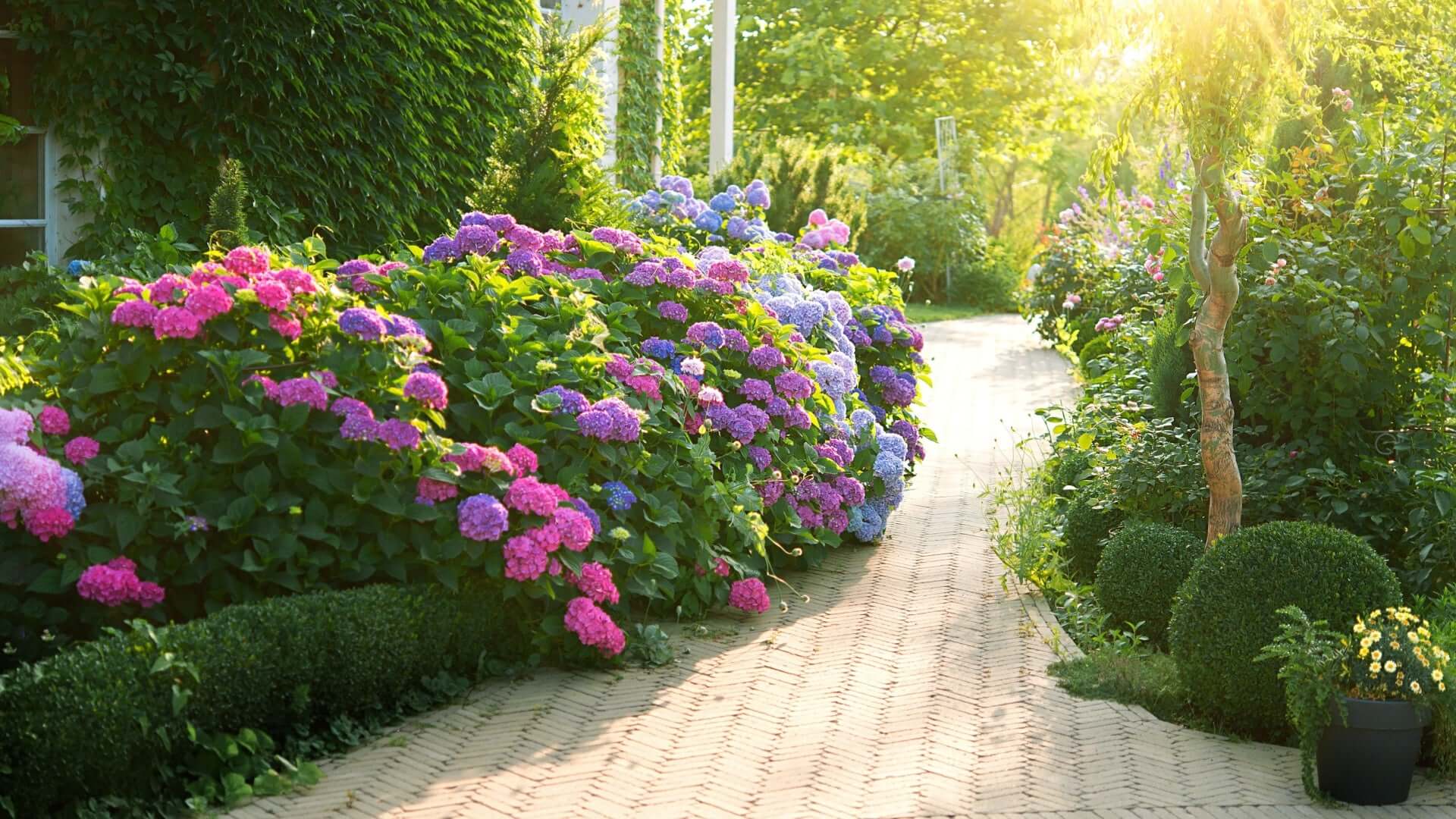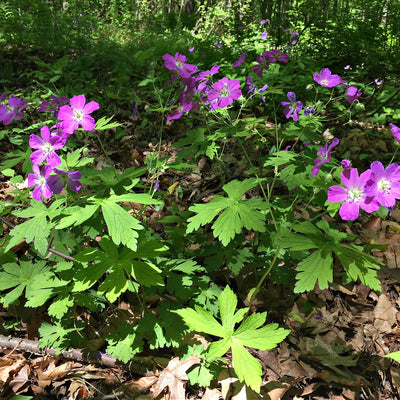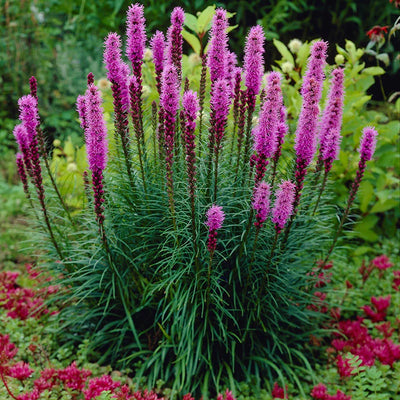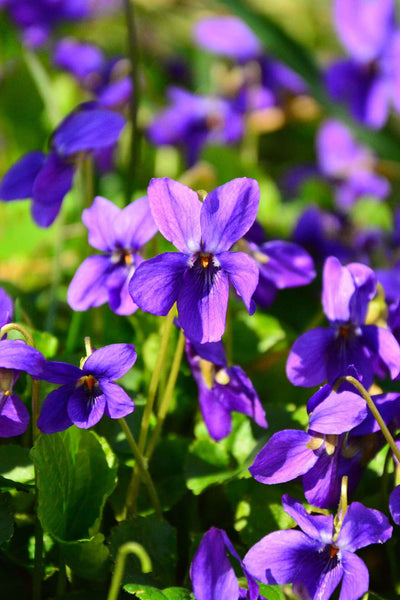Purple flowers have a special allure, providing striking color while attracting beneficial insects to the garden. For those looking to embrace native plants, a selection of wildflowers, such as Wild Geranium, Blazing Star, Jacob's Ladder, and Sweet Violet, offers an ideal combination of beauty, ecological benefits, and adaptability. These plants thrive in various conditions, making them a fantastic choice for gardeners seeking to add color and purpose to their landscapes. Let's explore how these vibrant natives perform in the garden, their preferred soil, and how their blooms draw essential pollinators.
Wild Geranium: A Woodland Beauty for the Shade Garden
Wild Geranium (Geranium maculatum), with its delicate, five-petaled purple flowers, brings a soft charm to woodland and shaded gardens. A native to the eastern United States, Wild Geranium thrives in rich, well-drained soil with high organic matter. It is particularly fond of loamy soils with retained moisture but doesn't fare well in soggy conditions. This plant prefers dappled sunlight or partial shade, making it an ideal option for growing beneath trees or in naturalized garden beds where full sun is less frequent.

Pollinators love Wild Geranium for its open blooms and accessible nectar. Bumblebees are particularly drawn to this flower, buzzing from bloom to bloom, while other solitary bees and small beetles also visit. These insects, in turn, help pollinate the plants, ensuring healthy reproduction and seed formation. The understated elegance of Wild Geranium, combined with its pollinator appeal, makes it a must-have for any shady garden that prioritizes native species and environmental support.
Blazing Star: Tall Spikes of Purple for Sunny Meadows
Blazing Star (Liatris spicata) is a striking native perennial known for its tall, spiky flowers that add vertical interest and brilliant purple color to the garden. It flourishes in total sun and prefers well-drained soil, which is surprisingly adaptable to various soil types. Blazing Star can find a home from sandy soils to loamy conditions, provided it isn't subjected to overly wet or heavy clay environments. It does well in meadows, prairies, or sunny borders where the sunlight is plentiful throughout the day.

In addition to being a showstopper visually, Blazing Star is a pollinator magnet. Its nectar-rich flowers attract a diverse array of butterflies, including monarchs and swallowtails, while bees, including native bumblebees and honeybees, are frequent visitors. The plant's upright structure provides ample landing spots for these insects, and the clustered blooms offer a steady store of nectar throughout the summer. Gardeners who prioritize supporting pollinators and adding a dramatic focal point to their landscapes will find Blazing Star an excellent addition to sunny garden spaces.
Jacob's Ladder: Delicate Blooms for Shade-Loving Spaces
Jacob's Ladder (Polemonium reptans) is a lovely woodland perennial with clusters of bell-shaped, lavender-blue to purple flowers atop fern-like foliage. This native plant prefers partial to full shade, perfect for woodland gardens, shaded borders, or areas with filtered light. It does best in moist, rich, well-drained soils, though it can tolerate occasional drought once established. In its native habitat, Jacob's Ladder often thrives in the forest understory, where the dappled sunlight filters through the canopy.

Jacob's Ladder is a favorite among pollinators. Its bell-shaped flowers attract long-tongued bees, such as bumblebees, which can easily reach the nectar. Hoverflies are also regular visitors to Jacob's Ladder, attracted by the nectar and pollen. With its delicate beauty and pollinator-friendly blooms, this shade-loving plant is ideal for gardeners looking to cultivate a vibrant native landscape.
Sweet Violet: A Groundcover with Pollinator Appeal
Sweet Violet (Viola odorata) is a low-growing native that thrives as a groundcover. It produces small, fragrant purple flowers that brighten the garden floor. It likes part shade but can tolerate full sun in cooler climates, making it versatile for various planting locations. Sweet Violet thrives in well-drained, slightly acidic soils rich in organic material. It performs well in woodland edges, garden beds, or even rock gardens, where it can spread and form a lush carpet of blooms.

Bees, particularly early spring bees, are drawn to the nectar of Sweet Violets, providing an essential food source during the early months when few other plants are blooming. The plant's fragrant flowers are also known to attract butterflies, offering nectar to help them through the more excellent parts of the year. As a groundcover, Sweet Violet is a beautiful option for filling in spaces, reducing soil erosion, and contributing to a pollinator-friendly garden.
Bringing Native Purple Blooms into Your Garden
Choosing native plants like Wild Geranium, Blazing Star, Jacob's Ladder, and Sweet Violet for your garden offers many benefits. These purple-hued beauties add vibrancy and texture to the landscape and support local ecosystems by attracting essential pollinators like bees, butterflies, and hoverflies. By selecting plants suited to your garden's sun exposure and soil conditions, you can ensure long-lasting success while creating a haven for beneficial insects. Whether planted in full sun, partial shade, or a wooded area, these native flowers will reward you with stunning blooms and a dynamic, pollinator-friendly environment.




